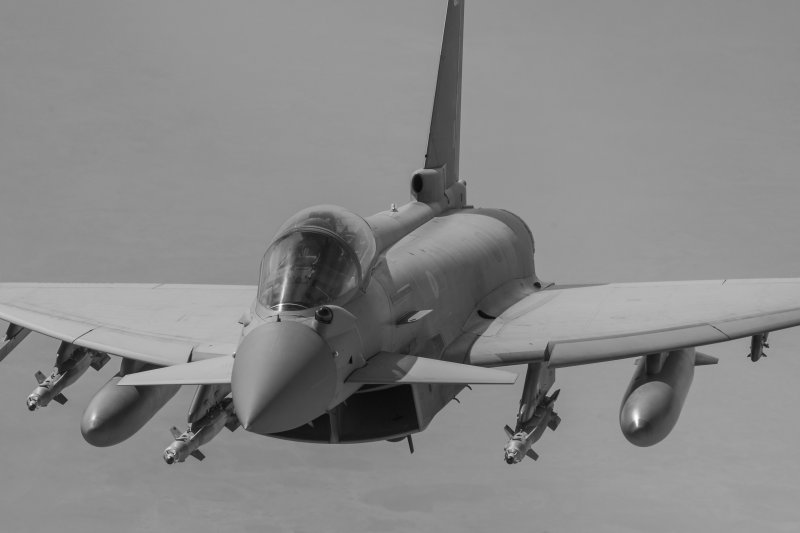British air operations struck Islamic State hideouts in Iraq four times in May, the British Defense Ministry said on Friday. Photo by Tyler Woodward/U.S. Air Force/UPI
June 1 (UPI) -- Britain's Royal Air Force successfully struck four Islamic State targets in northern Iraq in May, its defense ministry announced on Monday.
Although RAF Typhoon fighter planes and Reaper drones have flown continuous missions against IS strongholds since 2019, the May attacks, and two in April, were the first strikes in seven months against the insurgent group.
The ministry identified a May 8 Reaper attack on a bunker, which it said contained about 15 IS fighters, near Tuz Khurmatu, a May 10 attack on a cave bunker by two Typhoons, a May 13 Reaper attack on two bunkers and a patrolling Reaper which struck IS personnel hiding in a forest.
The British effort in Iraq is part of the Special Operations Task Force-Operation Inherent Resolve, a military campaign against IS in Syria and Iraq waged largely by the United States, but including Britain, France, Turkey, Canada, the Netherlands, Denmark, Belgium, Saudi Arabia and the United Arab Emirates, and Jordan.
A statement last week by U.S. forces headquartered in Kuwait noted that the fight against IS has not been slowed by the COVID-19 pandemic, despite a lack of face-to-face interaction with partners.
A Tactical Operations Center, with videoconferencing capability, was, however, installed so personnel could communicate during missions, officials said.
"The need to conduct operations remained and would not cease because of the pandemic," said an unidentified SOJTF-OIR Operations sergeant. "Therefore, in order to continue providing assistance to the CTS [CounterTerrorism Service] during operations, we needed a seamless solution to communicate digitally and vocally, as well as share visuals with our Iraqi partners.
"The process of brainstorming a solution revolved around two pivotal necessities: no-contact and excellent, secure, and reliable communications," the sergeant said. "The system achieved all of our requirements and was an integral piece in helping us fulfill our mission."















